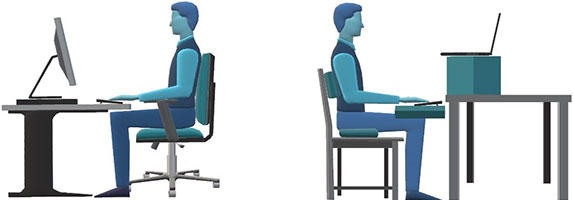Subscribe to our newsletter for timely content in your inbox
No matter where you are using a computer or laptop, your work space should comfortably fit your body.
Body posture awareness is important at the office, but also in a temporary work space.
No matter where you are using a computer or laptop, your work space should comfortably fit your body.



Additional temporary workspace ergonomic tips:
Other Resources:
OSHA provides a Computer Workstations eTool to help employers and individuals analyze and improve the workstation environment. This eTool includes an office ergonomics overview, evaluation tools for workstation components, checklists, as well as and an office equipment purchasing guide.